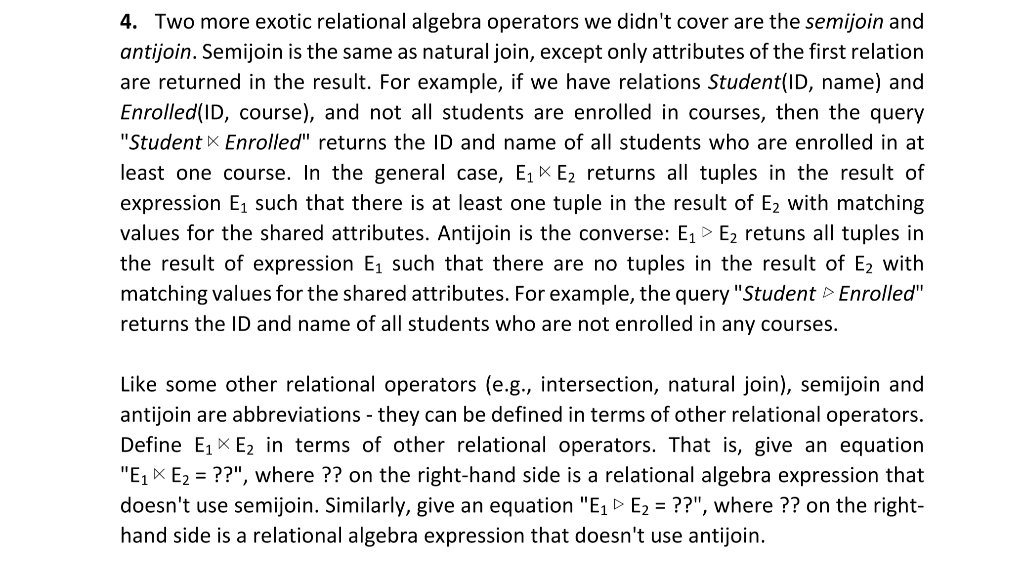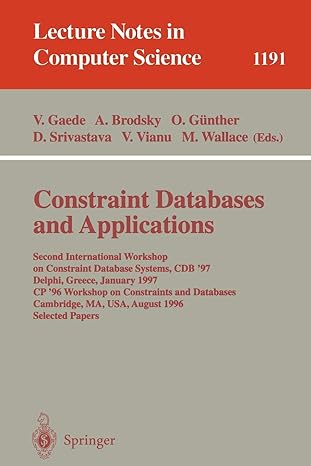
4. Two more exotic relational algebra operators we didn't cover are the semijoin and antijoin. Semijoin is the same as natural join, except only attributes of the first relation are returned in the result. For example, if we have relations Student(ID, name) and Enrolled(ID, course), and not all students are enrolled in courses, then the query "Student Enrolled" returns the ID and name of all students who are enrolled in at least one course. In the general case, Eix Ez returns all tuples in the result of expression E1 such that there is at least one tuple in the result of Ez with matching values for the shared attributes. Antijoin is the converse: E1 E2 retuns all tuples in the result of expression E1 such that there are no tuples in the result of E2 with matching values for the shared attributes. For example, the query "Student Enrolled" returns the ID and name of all students who are not enrolled in any courses. Like some other relational operators (e.g., intersection, natural join), semijoin and antijoin are abbreviations - they can be defined in terms of other relational operators. Define E1% E2 in terms of other relational operators. That is, give an equation "E1 E2 = ??", where ?? on the right-hand side is a relational algebra expression that doesn't use semijoin. Similarly, give an equation "E1 E2 = ??", where ?? on the right- hand side is a relational algebra expression that doesn't use antijoin. 4. Two more exotic relational algebra operators we didn't cover are the semijoin and antijoin. Semijoin is the same as natural join, except only attributes of the first relation are returned in the result. For example, if we have relations Student(ID, name) and Enrolled(ID, course), and not all students are enrolled in courses, then the query "Student Enrolled" returns the ID and name of all students who are enrolled in at least one course. In the general case, Eix Ez returns all tuples in the result of expression E1 such that there is at least one tuple in the result of Ez with matching values for the shared attributes. Antijoin is the converse: E1 E2 retuns all tuples in the result of expression E1 such that there are no tuples in the result of E2 with matching values for the shared attributes. For example, the query "Student Enrolled" returns the ID and name of all students who are not enrolled in any courses. Like some other relational operators (e.g., intersection, natural join), semijoin and antijoin are abbreviations - they can be defined in terms of other relational operators. Define E1% E2 in terms of other relational operators. That is, give an equation "E1 E2 = ??", where ?? on the right-hand side is a relational algebra expression that doesn't use semijoin. Similarly, give an equation "E1 E2 = ??", where ?? on the right- hand side is a relational algebra expression that doesn't use antijoin







